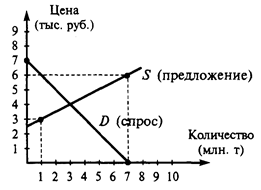The regional ME dialects had developed from respective OE dialects. ME dialects can be divided into 2 groups: early ME and late ME dialects. Early ME dialects are: The Southern group included Kentish and the South-Western dialects. Kentish was a direct descendant of the OE dialects known by the same name though it had somewhat extended its area. The South-Western group was a continuation of the OE Saxon dialects, – not only West-Saxon, but also East Saxon. The East Saxon dialect was not prominent in OE but became more important in Early ME, since it made the basis of the dialect of London in the 12th and 13th c. The group of Midland («Central») dialects – corresponding to the OE Mercian dialect – is divided into West Midland and East Midland as two main areas, with further subdivisions within: South-East Midland and North-East Midland, South-West Midland and North-West Midland. The Northern dialects had developed from OE Northumbrian. In Early ME the Northern dialects included several provincial dialects, e.g. the Yorkshire and the Lancashire dialects and also what later became known as Scottish. In Early ME, while the state language and the main language of literature was French, the local dialects were relatively equal. In Late ME, when English had been reestablished as the main language of administration and writing. The London dialect prevailed over the others. In the 14th and 15th c. there was the same grouping of local dialects: the Southern group, including Kentish and the South – Western dialects, the Midland group with its minute subdivisions and the Northern group. And yet the relations among them were changing. The London dialect prevailed over the others at that time. The History of the London dialect reveals the sources of the literary language in Late ME and also the main source and basis of the Literary Standard, both in its written and spoken forms. The London dialect became more Anglian than Saxon in character. ME major written records: the earliest samples of early ME prose are the new entries made in the Anglo-Saxon Chronicles from the year 1122 to the year 1154, known as the PETERBOROUGH CHRONICLES. The works in the vernacular were mostly of a religious nature. The great mass of these works are homilies, sermons in prose and verse, paraphrases from the Bible, psalms and prayers. The earliest of these religious works, the POEMA MORALE represents the Kentish dialect of the late 12th or the early 13th c. Of particular interest for the history of the language is ORMULUM, a poem composed by the monk Orm in about 1200 in the North-East Midland dialect. It consists of unrhymed paraphrases of the Gospels. The text abounds in Scandinavianisms and lacks French borrowings. Its most outstanding feature is the spelling system devised by the author. He doubled the consonants after short vowels in closed syllables and used special semicircular marks over short vowels in open syllables. The 13th c. is famous for POEMA MORALE (Kentish Sermons), ANCRENE RIWLE (South-western dialect – life of knights), PROCLAMATION of Henry 3 (political poems, London dialect), THE PROSE RULE OF ST BENEDICT (northern dialect). The 14th c. is famous for AY ENBITE OF INWIT (Dan Michael, Kentish dialect), a versified CHRONICLE, SIR GAWAINE AND THE GREEN KNIGHT (unknown author, SWd), translation of POLYCHRONICON (Hidgen, from latin into SWd, 7 books on world history, John de Trevisa of Cornwall), Adam Davy’s poems, Romances of Chivalry, Miracle Plays (midland or east midland dialect);, John Wyclif – translation of the Bible (London dialect).Most famous works are works of John Gower (VOX CLAMANTIS is in Latin, CONFESSIO AMANTOS- a composition of 40.000 octo-syllabic lines) and Chaucer. Geoffrey Chaucer (1340–1400) was by far the most outstanding figure of the time. In many books Chaucer is described as the founder of the literary language. He was born in London and had the most varied experience as student, courtier, official, and member of Parliament. His early works were more or less imitative of other authors – Latin, French or Italian. He never wrote in any other language than English. The culmination of Chaucer’s work as a poet is his great unfinished collectin of stories THE CANTERBURY TALES. Chaucer wrote in a dialect which in the main coincided with that used in documents produced in London. Although he did not really create the literary language, as a poet of outstanding talent he made better use of it than his contemporaries and set up a pattern to be followed in the 15th c. Chaucer’s literary language, based on the mixed London dialect is known as classical ME; in the 15th and 16th c. it became the basis of the national literary English language.




